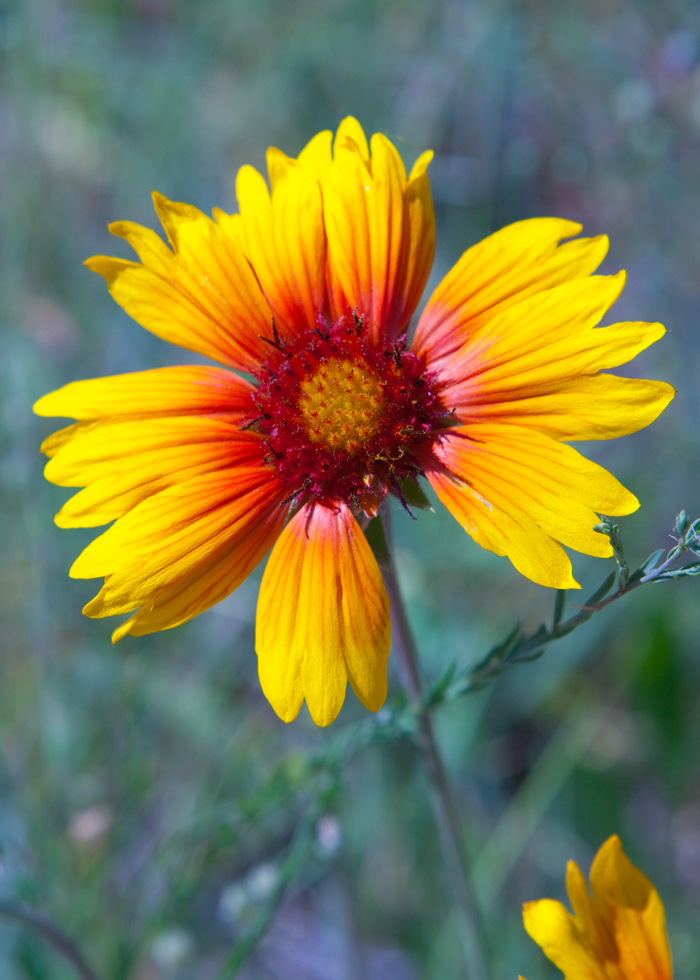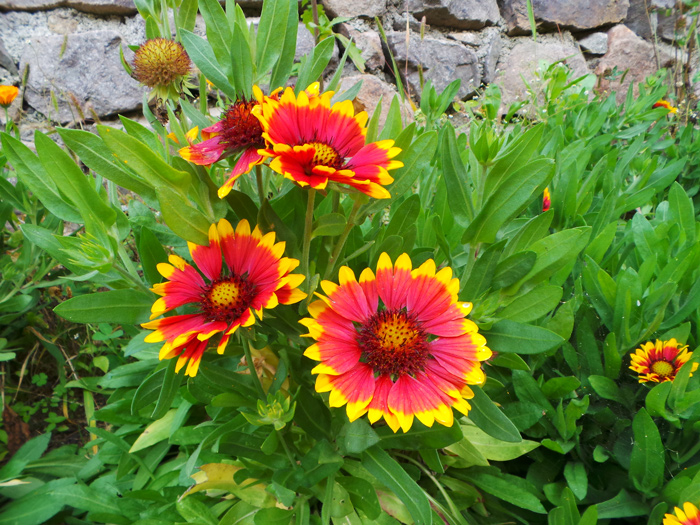The Blanketflower
- Gaillardia aristata Pursh
- Aster Family (Asteraceae)
Narration:
General Information
- Plants: Perennial herbs 8 to 28 inches tall. Leaves alternate and highly variable from entire to toothed, or deeply cut and lobed. Foliage covered with long, loose hairs.
- Flowers: Arranged in heads on the ends of the stems; head consists of yellow ray-flowers, purplish at the base, that surround the hairy, reddish purple, disk flowers. The tips of the ray petals are deeply three lobed.
- Fruits: Angular achenes with a tuft of basal hair and six to ten scales on the tip.
- Flowering Season: May to September.
- Habitat/Range: Prairies, dry meadows, and open woods from British Columbia to California and east to Saskatchewan and Colorado.1
Blackfeet Ethnobotany*
by Darnell and Smokey Rides At The Door
The Blackfeet word for the all-yellow variety of blanketflower is Ok Skoih Tsi, translating to yellow blanket; the name is derived from the beautiful yellow blanket that is formed when many of these flowers bloom over large swaths of prairie.
From a traditional medicinal standpoint, tea made from the blanketflower is used as nose drops to soothe nasal passages. It also aids in soothing eyes from irritation, as well as to helping nursing mothers when applied to sore nipples. Blanketflower additionally helps with sunburns and other skin conditions, stomach digestion, and kidney problems.2
From the Journals
by H. Wayne Phillips
Lewis collected blanketflower on July 7, 1806 and the specimen still exists in the Academy of Natural Sciences in Philadelphia; Lewis and his small party left their camp on Beaver Creek near present-day Lincoln, Montana, and headed up the Blackfoot River towards the Continental Divide. Though not extensively written about, it is a safe assumption that Lewis saw many examples of this beautiful bloom.3
Additional Information: These bright flowers come in a variety of colors. They are in the same scientific family as sunflowers. Another common name for this flower is ‘firewheels’. The genus is named after an 18th century French magistrate and patron of botany, Antoine René Gaillard de Charentonneau.4 A specific species of moth, Schinia masoni, known also more commonly as blanketflower moth, finds refuge specifically in blanketflowers; its coloring provides it camouflage in variants with red coloring and the disc florets color.5
*While traditional medicine is still practiced in many cultures including the Blackfeet culture and has many uses, please do not consume any plant material without consultation of a health professional.

© 2018 by Wikimedia Commons user Lystopad. Permission to use granted under the Creative Commons Attribution-Share Alike 4.0 International license.

Lewis & Clark Interpretive Center, Great Falls. © 2013 by Kristopher K. Townsend. Permission to use granted under the Creative Commons Attribution-Share Alike 4.0 International license.

Garden varietal. © 2014 by Wikimedia Commons user Syrio. Permission to use granted under the Creative Commons Attribution-Share Alike 4.0 International license.
Notes
- "Gaillardia aristata Pursh," United States Department of Agriculture Natural Resources Conservation Service Plant Database, plants.usda.gov/home/plantProfile?symbol=GAAR.
- All ethnobotanical information was given or verified by Smokey Rides At The Door and Darnell Rides At The Door. Initial research came from Native American Ethnobotany Database. Please be advised that not all studies included are correct and to consult with Native community members to verify information.
- H. Wayne Phillips, Plants of the Lewis and Clark Expedition (Missoula, Montana: Mountain Press Publishing Company, 2003). H. Wayne Phillips graciously donated his expertise on this subject by writing this narrative; The Definitive Journals of Lewis & Clark, Gary Moulton, ed.
- "Indian Blanket—Gaillardia pulchella," Baylor University Lake Waco Wetlands. www.baylor.edu/lakewaco_wetlands/index.php?id=23479.
- Wayne Owen, "Plant of the Week: Blanketflower," United States Department of Agriculture Forest Service. www.fs.usda.gov/wildflowers/plant-of-the-week/gaillardia_aristata.shtml.


